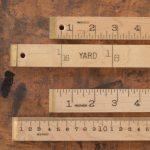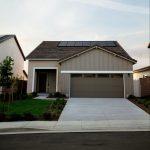Boiler Size Chart – What size boiler do I need?
What is the importance of a boiler size chart? Well, we all know how vital boilers are in our homes. From heating to hot water, we’d be chilly, unpleasant, and, plainly, dirty without them. But how can you determine what size boiler to get if you’re not an expert?
Because buying a new boiler is such a significant investment, it’s critical that you do it properly. If it’s too big, you’ll waste a lot of money on energy you don’t need. Also, if it’s too small, it won’t be able to provide enough hot water or heat for your home, resulting in cold rooms and wintry showers.
Boiler Size Chart: How are Boilers Sizes Measured?
When determining the optimum size boiler for your home, there are always many factors to consider, including how much hot water you consume and the sorts of fuel sources accessible. It might be tough to know which size to pick. So, use the boiler size chart to estimate the size boiler you’ll need, and then look for the best boiler in your size range. The ideal boiler is smaller than you may imagine.
Use the boiler size chart below to help you get started.
| Home Size | Bedrooms | Bathrooms | Radiators (Max) | Recommended Boiler Size (KW) |
| Apartment/Flat | 1-2 | 1 | 5 | 25 |
| Small House | 2 | 1+ WC | 7 | 30 |
| Medium House | 3 | 1+WC | 10 | 30 |
| Large House | 4 and above | 2 | 14 | 35 |
The output in kilowatts (kW) or British thermal units (BTUs) matters with boiler sizes, not the physical measurements. British Thermal Units are units used to quantify how much energy a boiler provides as heat. The higher the output, the more heat and hot water you’ll need, while other factors also play a role in deciding the correct size. Boiler technology has advanced to where they are now more efficient than before. Homeowners were once advised to select a giant boiler to compensate for heat loss; however, this is no longer the case. It will waste energy and cause you to pay more than you should for your gas bill.
In addition, modern boilers can adjust the amount of heat production necessary, allowing them to run at partial loads.
Other Helpful boiler size Charts
Size of Ideal Combi Boilers
| Boiler | Output | Available For |
| Logic Combi | 24kW, 30kW and 35kW | Installers, Social Housing |
| Logic Max Combi | 24kW, 30kW and 35kW | Homeowners, Installers |
| Logic+ Combi | 24kW, 30kW and 35kW | Homeowners, Installers |
| Logic Combi ESP1 | 24kW, 30kW and 35kW | New Builds, Social Housing |
| Logic Code Combi ESP1 | 26kW, 33kW and 38kW | New Builds, Social Housing |
| Vogue Max Combi | 26kW, 32kW and 40kW | Homeowners, Installers |
| Vogue Gen2 Combi | 26kW, 32kW and 40kW | Homeowners, Installers |
Ideal System Boiler size chart
| Boiler | Output | Available For |
| Logic System | 15kW, 18kW, 24kW and 30kW | Installers, New Builds, Social Housing |
| Logic Max System | 15kW, 18kW, 24kW and 30kW | Homeowners, Installers |
| Logic+ System | 15kW, 18kW, 24kW and 30kW | Homeowners, Installers |
| Vogue Max System | 15kW, 18kW and 26kW | Homeowners, Installers |
| Vogue Gen2 System | 15kW, 18kW, 26kW and 32kW | Homeowners, Installers |
Size of Ideal Heat Only Boilers
| Boiler | Output | Available For |
| Logic Heat | 12kW, 15kW, 18kW, 24kW and 30kW | Installers, New Builds, Social Housing |
| Logic Max Heat | 12kW, 15kW, 18kW, 24kW and 30kW | Homeowners, Installers |
| Logic+ Heat | 12kW, 15kW, 18kW, 24kW and 30kW | Homeowners, Installers |
| Mexico HE | 15kW, 18kW, 24kW, 30kW and 36kW | Homeowners, Installers |
| Evomax 2 | 30kW, 40kW, 60kW, 80kW, 100kW, 120kW and 150kW | Installers |
Factors to Consider When Sizing a Boiler
Here are some of the key factors worth considering when it comes to sizing a boiler.
Hot water demand
Many American homeowners use a mix of gas boilers and water heaters (Domestic Hot Water systems) to provide domestic hot water and heat their homes. Also, modern combi boilers may replace both, making your home heating system more efficient and pleasant.
When choosing a boiler for your home, think about how much hot water you’ll need and if a combi boiler or a conventional boiler with a hot water tank is the best option.
Finally, the sort of system you select will influence the size of the boiler you require. A combi boiler delivers hot water on demand, and its capability is stated in terms of how much water it can warm per minute to a specific temperature rise.
The number of radiators for my home
The number of radiators you have or want to install is a vital factor to consider when sizing a boiler for your building. If you have a few in a small apartment, selecting the smallest suitable boiler will provide you with the most savings. It will guarantee that you do not overpay for your monthly heating expenses.
A typical three- or four-bedroom home has roughly ten radiators, necessitating the usage of a small or medium combi boiler or a non-combi boiler. A larger house with extra radiators or an en suite bathroom will almost always require a larger boiler.
Heat loss
When sizing a boiler for your house, the physical size of your structure was formerly a common consideration. While this is still important, having a professional analyze your home’s heat loss is a far better approach to determine the most effective boiler size.
Heat loss estimates consider a variety of parameters, such as the number and type of radiators, floor space, insulation, the number and type of windows, and other elements that contribute to heat loss in your home.
A heating expert will use this information to calculate how much heat your home would be losing on the chilliest day of the year, allowing them to recommend the best boiler size for you.
Water pressure
Although this usually is not an issue for modern houses on a communal water supply, some older properties may lack an adequate high-pressure water supply, which might affect the kind and size of boiler you select.
A combi-boiler must be large enough to handle the volume of water heated via it. The larger the boiler, the higher the flow rate.
While most manufacturers list the maximum flow rate for their boilers, having a professional assist you may help you pick the most cost-effective boiler for your house, saving you money in the long run.
Type of fuel
Because boilers for different fuels might vary in terms of efficiency, the type of fuel available in your home can also influence the size of boiler you pick.
Natural gas is used in most North American homes since it is the most efficient. However, households not linked to the main gas supply opt for an oil-fired or LPG (liquefied petroleum gas) system instead.
These considerations may affect the type of boiler system you choose and the optimal size for your house. Therefore, seek professional guidance from a boiler engineer to make the best possible investment.
Alternative energy sources
Many individuals want to understand alternate energy sources that may be more ecologically friendly when they inquire how to measure a boiler for a house. Some modern boilers are designed with future energy sources in mind.
For example, your boiler could be able to run on a mixture of natural gas and hydrogen gas if such mixes are available today or in the future. If you decide to build a boiler that supports renewable energy sources, the size of the boiler may become an essential consideration.
Other factors include boiler model, heat pump, outdoor temperature, heating demands, power output, water vapor output, water volume (capacity), operating cost, boiler costs, heat source, heat capacity, heat input, heat load, the heat of vaporization, and incoming water temperature.
Boiler Types and sizes
There are three types of boilers available. These are combi, system, and conventional boilers. They may all run on gas, oil, or Liquified Petroleum Gas (LPG).
Combi boilers
They are the most common kind of boiler installed in American houses. They’re affordable and tiny, making them suitable for homes with one or two bathrooms. They draw water from the mains and offer on-demand central heating and hot water. There are no extra tanks or cylinders, allowing you to conserve space in your home. They are, however, restricted in the amount of hot water they can give because they do not have a cylinder.
You should consider a system boiler if you have a big home with several bathrooms.
For example, modern combi boiler models from US Boiler Company are stainless steel condensing boilers with a built-in secondary heat exchanger for providing domestic hot water to a home or building.
System boilers
System boilers are similar to combi boilers in that they draw water from the mains as well. However, a system boiler requires an unpressurized hot water tank for storage. While this means they will take up more room, they are better suited to families with a considerable need for hot water. They can simultaneously give hot water to two or more outlets without lowering the water pressure.
Regular boilers
They’re relatively common in older houses. It needs to be installed along with a feed and expansion tank in the loft. A vented hot water cylinder is also required. Before being heated, cold water is supplied to the boiler from the roof tank and then pumped to the hot water cylinder or central heating system.
Regular or conventional boilers should only be used to replace an existing traditional system. If it’s time for a boiler replacement, it’s considerably more cost effective to upgrade to a combi.
Conclusion on boiler size chart
It’s critical to select the correct boiler size for your home. Using a boiler size chart, you can get a fair understanding of the suitable boiler size for your home.
Besides, a boiler engineer would propose the best boiler for your house and heating needs if you have any doubts. Based on the size of your residence and the amount of hot water you’ll need, you can estimate what you require.
Related House Size Charts
- Barbie Doll Size : What are different sizes of Barbie ?
- Blanket sizes chart : blanket sizes and dimensions in inches & cm
- Tablecloth size chart – What are standard tablecloth sizes ?
- How Many Meters Are In A Yard?
- How Many Centimeters are 8 Inches?
- Knife Sizes and Different Types
- 4 Inches is How Many Centimeters?
- Light Bulb Base Sizes : What size light bulb base do I need?
- Tesalate Towel Size Guide
- Light bulb Size : What are the different and standard bulb sizes?
- Duvet Sizes: What is a Standard-Size Duvet?
- Single Car Garage Size and Dimensions
- How High Is A Story?
- How Much Does 1 Cup Of Rice Weigh?
- Cast Iron Skillet Sizes: What Size Do I Need?
- Dollar Bills Size Chart
- Pizza Sizes: Which One to Order?

















